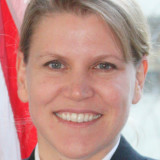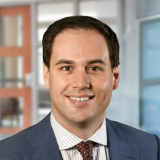When I can't sleep, I do what millions of Americans do: reach for my phone. As a regular gym-goer with a degree in movement science and a medical degree, my social media feed is filled with health content ranging from useful workout tips to dubious claims about curing diseases through diet. I am fortunate that my education provides a filter against misinformation, but I wonder: how does this content affect those without similar training?
Scrolling through these wellness spaces, I've noticed a striking absence of mainstream medical voices. Has medicine's failure to engage with the public created a vacuum now filled by a bewildering mix of voices that the average person might struggle to distinguish between, blurring the lines between credible information and questionable claims?
The Pandemic's Information Revolution
COVID-19 transformed how Americans engage with health information. As people were confined to their homes, online fitness programs exploded in popularity while everyone was tasked with navigating rapidly evolving pandemic guidelines. The ubiquitous phrase "do your own research" became both a rallying cry and burden.
In this environment, fitness culture shifted from a "bro-based" approach to an "evidence-based" paradigm, exemplified by influencers like Jeff Nippard, whose millions of followers demonstrate the public's hunger for science-based wellness information. This demand has led to an abundant supply where algorithms blur distinctions between reputable communicators and exploitative influencers.
The Mechanistic Plausibility Trap
Throughout the wellness space, I've observed what I call "mechanistic plausibility bias" — relying on theoretical explanations rather than evidence of real outcomes. The pattern is predictable: identify a nutrient with a typically beneficial bodily function, claim more improves health, then market that supplement.
But we have learned this lesson before. The U.S. government once funded large trials investigating vitamin supplementation based on this theory, with largely negative results. This is why modern guidelines typically only recommend supplements for those with deficiencies. Despite this evidence, the supplement market continues to thrive on clever advertising. These largely unregulated products are not only expensive but potentially dangerous, with investigations revealing inconsistencies in content and undisclosed ingredients.
The Medical Establishment's Role
Where is the medical community to help well-intentioned people navigate this complex information landscape?
Academic research is locked behind paywalls, professional resources are restricted in access and difficult to discover, and free options such as medical X (Twitter) seldom break out of their insular social media bubbles. Recently, my mother texted me because she saw on Facebook that creatine can treat menopausal symptoms. I directed her to the Patient Education page on menopause treatments on UpToDate, but without a son in medicine, she would never have found this resource. Our failure to make quality information accessible is creating a fundamental inequality that drives people straight into the arms of the wellness-industrial complex. Nature abhors a vacuum, and when evidence-based medicine doesn't engage with the public directly, others eagerly fill the void.
Reclaiming the Space
To address this problem, we need to liberalize medical knowledge in two key ways:
First, medical institutions should engage with existing trusted voices in the wellness space through credibility markers. Our professional organizations could endorse creators who already produce algorithmically engaging content that meets scientific standards, helping to sift through the noise and elevate reliable voices in spaces where people already seek information. This approach might counter figures who spread misinformation under the veneer of scientific legitimacy.
Second, better advertise and expand access to high-quality medical resources. UpToDate's Patient Education platform is a phenomenal resource that's already available to all; we just need to advertise it more aggressively. OpenEvidence, currently limited to health care professionals, should move toward being available to everyone. Medical journals should require publicly available plain-language summaries with each study explaining findings and limitations without requiring specialized knowledge.
Critics will rightfully point out risks in democratizing medical knowledge: recommendations evolve over time and patients may overestimate their ability to interpret complex evidence. Perhaps most concerning, by endorsing existing wellness influencers, we might paradoxically mark them as representatives of a medical establishment that people already distrust, potentially transferring institutional wariness to these newly-credentialed voices.
While these concerns are valid, they shouldn't prevent progress. The current information vacuum is already filled with voices ranging from helpful to harmful, making liberalized medical knowledge an imperfect but necessary harm reduction strategy for people navigating this wilderness alone. By thoughtfully implementing these strategies alongside helping people understand evidence hierarchies and limitations, we can address these challenges while still improving access to quality health information.
While tech platforms and policymakers have responsibilities here, the medical community must lead. People's interest in health evidence is fundamentally positive, a sign of engagement we should nurture. "Doing your own research" becomes beneficial when supported with accessible resources and guidance on evaluating evidence. In a world overflowing with health information, our task isn't to restrict access but to build better maps.
Which online voices do you trust the most? Share in the comments.
Jacob Murphy, MD is an intern at Johns Hopkins. He is interested in primary care, population health, and low-resource settings.
Illustration by Jennifer Bogartz







